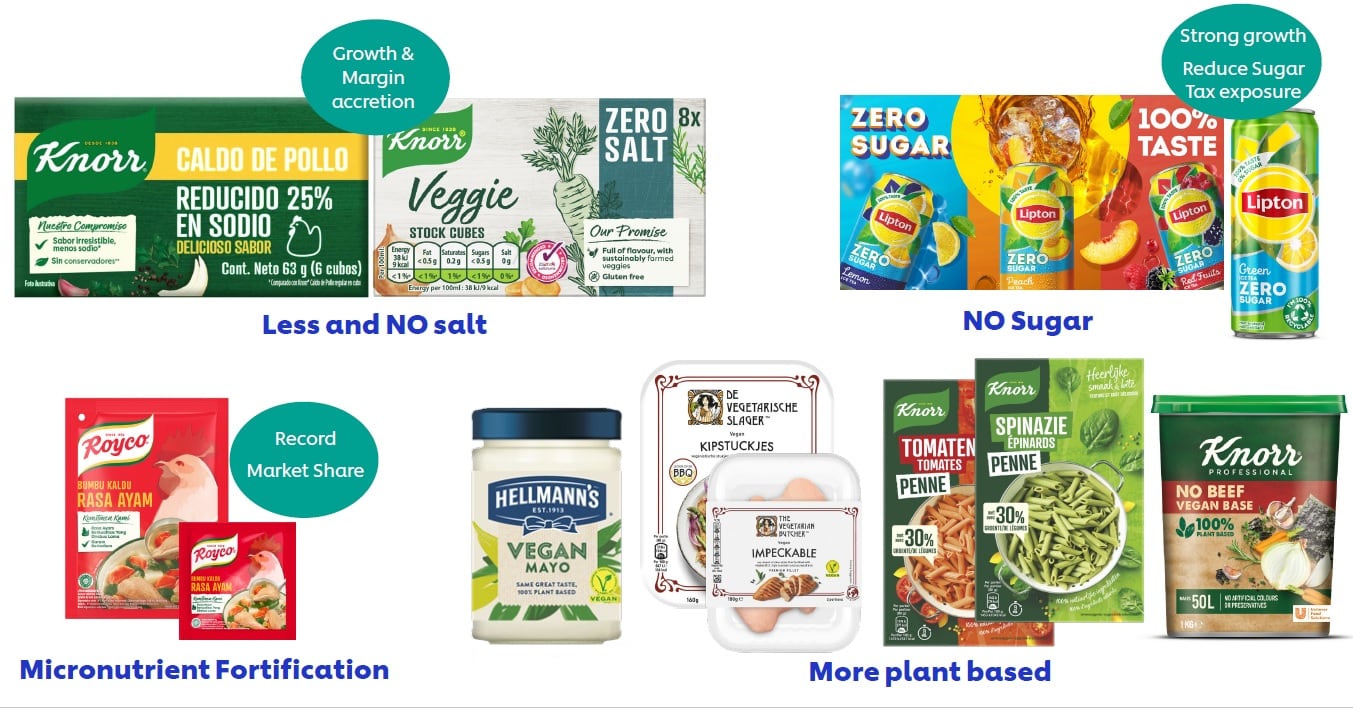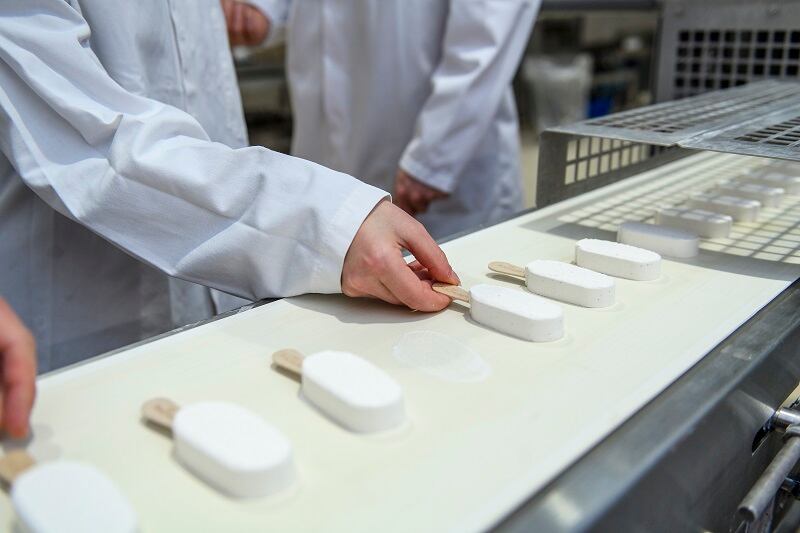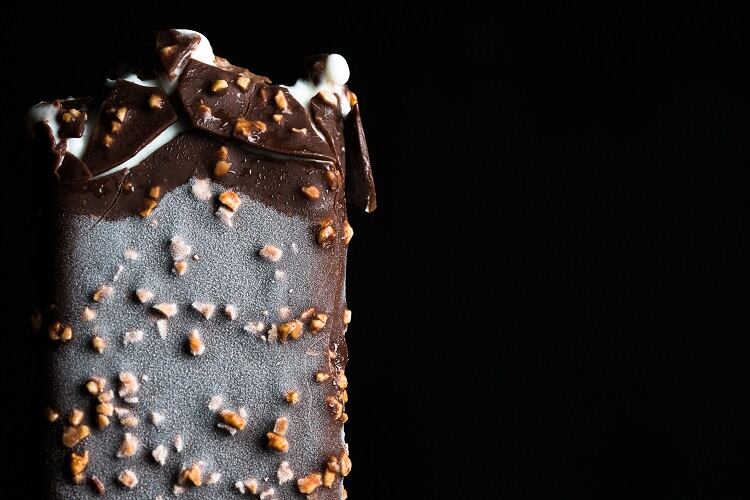He explained that while Unilever is “fully focused on” and “investing in growth,” it is doing so by strategically simplifying its innovation pipeline, pruning its portfolio to concentrate on higher growth spaces and magnifying the business benefits of its purpose-driven initiatives.
Woven through all of these initiatives is a “digital transformation” that is reinforcing Unilever’s journey to become a company that “delivers consistent, competitive, profitable and sustainable growth,” by streamlining nearly every aspect of the business from customer relationships to sourcing and manufacturing to consumer acquisition and loyalty, Jope said.
Stepping up operational execution
The need for and process of revamping Unilever’s approach to business began just before the pandemic in 2019 when the company’s market share was “stuck” in the low 40s – dropping down to 42% in 2018 and 44% in 2019, Jope said.
Part of this was due to many of Unilever’s products failing to hold their own against the competition in blind tests, Jope said.
“Product superiority is the most fundamental building block of our competitiveness, our products need to perform, they need to exceed consumer expectation. Now back in 2019, only 51% of our products that we tested were clearly superior to the competition in blind testing,” he explained.
“Now that number is 71% [with] most of the rest at parity with very few losses,” he said, explaining that Unilever worked across its portfolio to identify and amend product shortcomings.
For example, he said, Royco, a Knorr brand in Indonesia, was reformulated to be more nutritious and taste better, which moved the brand “from parity to decisively winning in product testing” so that it could deliver 12% year-to-date growth.
Fewer but bigger innovation bets
The second prong in Unilever’s do-more-with-less approach to improving execution was to strengthen its innovation pipeline by slashing the number of products it pursued so that it could invest more in each and improve their chances of success.
“Through much of Unilever’s history, we’ve defaulted to the local for local mindset, and that has resulted in a proliferation of innovation and local SKUs,” Jope said. But, he added, the trade-off of increased innovation at the local level was an inability to effectively scale products across markets.
“We needed to simplify the innovation portfolio and use our scale to better effect,” he said.
As such, Unilever slashed its innovation projects by 40% since 2019 and doubled the average project size.
“This has translated into bigger market impact, and the incremental turnover from those innovations has exceeded 1 billion Euros in 2021. That’s more than double the incremental turnover from 2020,” he said.
Part of this success was due to Unilever underpinning the majority of its innovation with “differentiated technology” that “combined deep consumer understandings with great technology to enable a step up in performance that’s relative across multiple markets.”
Examples of successful innovations from this approach include Hellmann’s vegan mayo and Magnum Billionaire ice cream, which promises an “unrivalled sensorial ice cream experience” thanks to layers of cracking chocolate with crunchy cookies, caramel sauce and then a swirl of ice cream flavors.
Doing good is good for business
The third prong in Unilever’s enhanced business execution was to lean into purpose-driven initiatives – not because the company was full of “tree huggers,” Jope said, but because brands that consumers perceived as purposeful grew faster than other brands.
Unilever found that brands with a “high purpose” had an underlying sales growth of 6.1% in 2021 compared to only 0.2% for brands with a “low purpose.”
Jope explained that figures like these show that a commitment to climate change, regenerative agriculture, waste reduction with a specific focus on plastic, and offering fair living wages “helps us drive growth, helps us reduce cost and helps us mitigate risk.”
He also noted that weaving these values into the company’s work served as “an absolute magnet for talent. Not just entry level talent, but senior talent as well.”
But he added, the return on investment required patience. He explained purpose-driven messaging takes time to build, but when done right “drives the growth flywheel” so that the return on in investment in media for purpose driven brands is 20% higher.
A digital transformation
The last prong of Unilever’s plan is an ongoing “digital transformation,” which touches every aspect of the business from “the radical convergence of media content and commerce, data driven customer relationships and management of retail conditions using advanced technology to supply chain that has twins of most of our factories in the metaverse and which use a combination of real time mapping, geolocation data and artificial intelligence to help prevent deforestation,” said Jope.
Technological advancements also hare helping to shorten R&D project timelines and lower the cost of experimentation, Jope said, quipping: “You might think of us as a staples company that uses digital technology, but I don’t think that is right anymore. We’re more like a digital company that happens to sell soap and ice cream.”
Boosting market share
Together these building blocks helped Unilever break its market share free from the “low 40s” where it was “stuck” in 2017 to 2019, as Jope noted, and surge upwards of 53% in 2020 and 2021.
Jope cautioned that Unilever “might see a slight dip in the coming months as a result of some of our disciplined pricing action and some conscious business decisions to exit unprofitable sales.”
But, added, “that will be temporary. We’ve built the muscle to stay meaningfully above 50%.”




